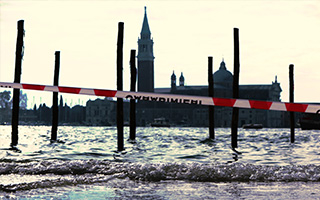The world is passing through an unprecedented crisis, with the COVID-19 pandemic impacting every aspect of our lives. While we make all efforts to come out of this crisis better prepared for such situations in the future, it has also pushed to look deeper into the underlying causes. It is a known fact that climate change has significantly altered the environment and behaviour of living beings. At the same time, rapid and rather haphazard urbanization has destroyed eco-systems to an unimaginable extent. This unholy combination of climate change and urbanization has catalyzed and magnified the current pandemic.
Recent projections from the UN indicate that global warming could rise 3.2°C by 2100, which is higher than the limit of 2°C set by the Paris Agreement. The consequence will be an existential threat to several major cities across the globe. Due to high-intensity rainfall, increased instances of urban flooding have been reported in recent decades in nearly every part of the world and have significantly impacted historic cities like Venice in Italy.
If these trends continue, many disaster scenarios will continue to unfold, causing unprecedented and irreversible damage to urban heritage. The increased frequency of high precipitation in some regions will trigger floods and landslides. These may increase the number and intensity of very strong hurricanes. Sea level rise, coupled with coastal storms, will increase the impacts of storm surge and river flooding. Higher temperatures and melting glaciers may cause glacial lake outbursts that can flood many historic settlements that are located downstream.
However, urban heritage should not be seen merely as a passive victim of climate change and disasters. Through enduring past disasters and adjustments to the local environment, communities in historic cities and traditional settlements often develop a series of resilient features in the urban environment that could contribute towards adapting to climate change, controlling carbon emissions and mitigating the impacts on built fabric as well as communities.
This makes a strong case for recovering traditional knowledge systems in urban planning and management, and identifying their potential role in disaster risk reduction for enhancing the safety and resilience of historic urban areas. It necessitates a people-centred development model that uses traditional knowledge to achieve sustainable and equitable growth. It also calls for a territorial planning approach extending over the larger ecological footprint of a historic city rather than a conventional master planning approach. Moreover, there is a need for greater coherence between heritage policies and those for climate change and disaster risk management at national, provincial and city levels.
ICCROM, as an intergovernmental organization dedicated to the conservation of all forms of cultural heritage in every region of the world, has been at the forefront of developing various activities aimed at capacity building and advocacy in disaster risk management and climate change adaption for cultural heritage. ICCROM acknowledges that a climate-altered future requires unified action across sectors. It aims to continue efforts in this area through the development of new tools, guidelines, training and awareness programmes for various target audiences, building bridges between heritage and non-heritage sectors to address the common challenge for a safer and sustainable future of heritage and people. However, this can only be achieved through enhanced multilateral cooperation by unleashing the soft power by global organizations, business and citizens.
On 31 August, ICCROM participated in the IED Conference on “Climate change and sea level rise: Potential disruption and possible solutions. The Role of Europe” in Venice, Italy, via video message delivered by Dr Rohit Jigyasu. This event is part of the first-ever “Soft Power Club” conference from 31 August to 1 September 2020.

